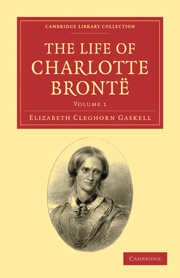Summary
In the course of this sad autumn of 1845, a new interest came up; faint, indeed, and often lost sight of in the vivid pain and constant pressure of anxiety respecting their brother. In the biographical notice of her sisters, which Charlotte prefixed to the edition of “Wuthering Heights and Agnes Grey,” published in 1850—a piece of writing unique, as far as I know, in its pathos and its power—she says :—
“One day in the autumn of 1845, I accidentally lighted on a MS. volume of verse, in my sister Emily's hand-writing. Of course, I was not surprised, knowing that she could and did write verse: I looked it over, and something more than surprise seized me—a deep conviction that these were not common effusions, nor at all like the poetry women generally write. I thought them condensed and terse, vigorous and genuine. To my ear they had also a peculiar music, wild, melancholy, and elevating. My sister Emily was not a person of demonstrative character, nor one, on the recesses of whose mind and feelings, even those nearest and dearest to her could, with impunity, intrude unlicensed: it took hours to reconcile her to the discovery I had made, and days to persuade her that such poems merited publication.…… Meantime, my younger sister quietly produced some of her own compositions, intimating that since Emily's had given me pleasure, I might like to look at hers. […] ”
- Type
- Chapter
- Information
- The Life of Charlotte Brontë , pp. 334 - 352Publisher: Cambridge University PressPrint publication year: 2010First published in: 1857

